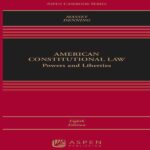- عنوان: Russian Provincial Society / An Empirical Analysis
- نویسنده: Juri Plusnin
- حوزه: روسیه
- سال انتشار: 2022
- تعداد صفحه: 374
- زبان اصلی: انگلیسی
- نوع فایل: pdf
- حجم فایل: 6.59 مگابایت
مطالعه تجربی طولانی مدت من، که یافته های تعمیم یافته آن در این تک نگاری ارائه شده است، منحصراً برای جامعه استانی روسیه کاربرد دارد. این جامعه شهرهای بزرگ یا حتی متوسط نیست. این جامعه شهرهای کوچک و نواحی روستایی است – از آنجایی که نواحی روستایی شهرهای کوچک را احاطه کرده اند، «محل ها» که با هم یک تداوم ارگانیک، هم فضایی و هم اجتماعی را تشکیل می دهند. حتی شهرهای کوچک (و همچنین مناطق قابل توجهی از بسیاری از شهرهای متوسط) تفاوتی با روستاهای ما ندارند. به این معنا، بخش روستایی شیوه زندگی خود، اعمال مادی و معنوی جمعیت را بر شهر کوچک تحمیل میکند و در نتیجه آن را «جذب» (بلعیده) میکند. سیستم معیشت خانوارها در شهرهای کوچک مشابه و در برخی جاها مشابه با مناطق روستایی است. این در تمام دهههای تحقیق من چنین بود – بهویژه در اواخر دهه 1980 و در طول بحران دهه 1990. و هنوز هم در آغاز دهه 2020 وجود دارد. بنابراین، من فکر می کنم منطقی است که سوابق مشاهدات خود را در مورد 300 از کل 1700 جامعه محلی به بخش قابل توجهی از جمعیت روسیه تعمیم دهم. این بخش از دو پنجم تا نیمی از کل جمعیت کشور را شامل می شود. در واقع، این روسیه استانی است. در ابتدا، هدف از این تحقیق توصیف ساختار اجتماعی جوامع محلی بود که سپس به صورت کاملاً محدود و عملیاتی درک شد. در واقع، ساختار اجتماعی مردمی محلی که به طور تجربی توصیف شد، نتوانست با الگوهای طبقه بندی طبقاتی یا دارایی منطبق شود. نه طبقه بندی بر اساس درآمد خانوار و نه توزیع افراد بر اساس رتبه در سیستم دولتی مبتنی بر املاک، امکان درک ماهیت روابط موجود بین مردم، خانواده ها و گروه های اجتماعی در جامعه محلی را فراهم نمی کند. علاوه بر این، این روابط و کل زندگی جامعه با ساختار سرزمینی محلی مرتبط است. یکی بدون دیگری وجود ندارد; آنها متقابلا یکدیگر را تعیین می کنند. فرافکنی فیزیکی جامعه بخشی ارگانیک از ساختار اجتماعی آن است. سه مؤلفه رفتار اجتماعی از هم تفکیک ناپذیرند: سکونت (در فضای فیزیکی)، وجود (روابط) و فعالیت (معاش). هر یک ساختار خاص و ویژه ای دارد اما به دو دیگر وابسته است. علاوه بر توصیف روابط بین مردم، نشان دادن الگوهای معیشتی آنها – مدیریت خانگی و شیوههای اقتصادی – که به شدت بر ساختار روابط تأثیر میگذارد، ضروری است. با این حال، معلوم شد که مدیریت خانوار و شیوههای اقتصادی با ساختار سرزمینی مرتبط است، زیرا برای امرار معاش جمعیت استانی ما عمدتاً به بخش غیررسمی و در سایه اقتصاد متکی است. معیشت بیشتر به منابعی بستگی دارد که توسط طبیعت فراهم شده و توسط خود مردم در خانه های خود (سرزمین) ایجاد شده است. بنابراین، ساختار اجتماعی استانی را در اینجا به عنوان یک سیستم سه جزئی توصیف میکنم: ساختار سرزمینی، الگوهای معیشتی (اقتصاد) و ساختار روابط در نظام اپوزیسیونهای اساسی که این روابط را توصیف میکنند («ما/آنها»، «فعال». /جمعیت منفعل» و مخالفتهای «قشرهای بالا/پایین»). تنوع سوابق اساسا قوم نگاری نیاز به تعمیم داشت. چهار روشی که من برای گونهشناسی جوامع محلی استفاده کردم کاملاً اکتشافی بودند، بهویژه هنگامی که جوامع را بر اساس درجه انزوای فضایی و میزان تأثیر خارجی، دولتی بر توسعه آنها طبقهبندی میکردم. این ابزارها به من اجازه دادند تا ویژگیهای ساختاری تمام سه مؤلفه ذکر شده در بالا را با گروهبندی آنها به چند شکل معمولی توصیف کنم. من فقط شش نوع از جوامع محلی را شناسایی کردم که به چهار نوع اساسی قابل تقلیل هستند. این دو رویکرد – تجزیه به سه مولفه ساختاری از یک سو و گونهشناسی جوامع مبتنی بر اصول بیرونی از سوی دیگر – امکان تمایز چندین الگوی کاملاً واضح را در وصله زندگی ولایی فراهم کرد. آنها علاوه بر جامع بودن و خلاصه بودن توصیفی، ارزش پیش بینی نیز دارند. با دانستن اینکه یک جامعه محلی را می توان به چه نوع طبقه بندی کرد – بر اساس سن، انزوای فضایی، و تأثیر منابع عمومی بر توسعه آن (حتی با طرح مرکز اداری آن) – می توانیم جنبه های مختلف وجود آن را به طور منطقی تخمین بزنیم: ساختار جامعه قلمرو تحت کنترل؛ ماهیت و حتی انواع شیوه های اقتصادی گسترده ساکنان؛ ساختار بخش رسمی اقتصاد محلی؛ ترکیب جمعیت، از جمله ساختار «ما/آنها»؛ و حتی نظام روابط قدرت و عوامل تعیین کننده موقعیت های فردی. البته من ادعا نمی کنم که ارزش پیش بینی گونه شناسی های من مطلق است. جوامع استانی در گستره وسیع روسیه آنقدر متنوع هستند که به راحتی در بستر پروکروستی مفاهیم جامعه شناختی جای می گیرند.
My long-term empirical study, the generalized findings of which are presented in this monograph, applies exclusively to the provincial society in Russia. It is not the society of large- or even medium-sized cities. It is the society of small towns and rural districts—since rural districts surround the small towns, “localities,” forming together an organic continuity, both spatial and social. Even the small towns (as well as considerable areas of many medium-sized cities) are no or little different from our villages. In this sense, the rural district imposes its way of life, the material and spiritual practices of the population, on the small town, thus “absorbing” (devouring) it. The very system of household livelihoods in small towns is similar, and in some places identical, to that in rural areas. This was so throughout all the decades of my research—especially pronounced in the late 1980s and during the crisis of the 1990s; and still the case at the beginning of the 2020s. Therefore, I believe it reasonable to extrapolate the records of my observations covering 300 of the total 1700 local communities to a significant part of Russia’s population. This part ranges from two-fifths to half of the entire population of the country. In fact, this is provincial Russia. Initially, the purpose of the research was to describe the social structure of local communities, which was then understood quite narrowly, operationally. In fact, the empirically described local grassroots social structure failed to fit class or estate stratification patterns. Neither stratification by household income nor distribution of people by rank in the estate-based state system enables to understand the essence of relations existing between people, families, and social groups within the local community. In addition, these relations and the entire life of the community are associated with the local territorial structure. One does not exist without the other; they mutually determine each other. The physical projection of the community is an organic part of its social structure. Three components of social behavior are inseparable: habitation (in physical space), existence (relationships), and activity (subsistence). Each one has a particular and special structure but is dependent on the other two. In addition to describing relationships between people, it proved necessary to also depict their subsistence patterns—household management and economic practices—which strongly affect the structure of relations. However, household management and economic practices turned out to be associated with the territorial structure, since for subsistence our provincial population relies primarily on the informal and shadow segment of the economy. Livelihoods depend most closely on the resources provided by nature and created by the people themselves on their own homesteads (territories). Therefore, I describe the provincial social structure herein as a three-component system: the territorial structure, subsistence patterns (economy), and the structure of relations in the system of basic oppositions describing these relations (the “us/them,” “active/passive population,” and “upper/lower strata” oppositions). The diversity of essentially ethnographic records required generalization. The four methods I used to typologize local communities proved to be quite heuristic, especially when classifying communities by the degree of their spatial isolation and by the extent of external, government, impact on their development. These tools allowed me to describe the structural features of all the above-mentioned three components by grouping them into just several typical forms. I identified only six types of local communities, which are reducible to four basic types. These two approaches—decomposition into three structural components, on the one hand, and typology of communities based on external principles, on the other hand—made it possible to distinguish several quite clear patterns in the patchwork of provincial life. Besides descriptive exhaustiveness and concision, they also have predictive value. Knowing what type a local community can be classified into—by age, spatial isolation, and impact of public resources on its development (even by the layout of its administrative center)—we can reasonably estimate various aspects of its existence: the structure of the controlled territory; the nature and even types of widespread economic practices of the inhabitants; the structure of the formal segment of the local economy; the composition of the population, including the “us/ them” structure; and even the system of power relations and the determinants of individual status positions. Of course, I do not claim that the predictive value of my typologies is absolute. Provincial communities over the vast expanse of Russia are too diverse to fit readily into the Procrustean bed of sociological concepts.
این کتاب را میتوانید از لینک زیر بصورت رایگان دانلود کنید:
Download: Russian Provincial Society



































نظرات کاربران